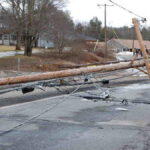Travelers visiting Laos recently faced a grim tragedy when six tourists died after drinking suspected methanol-contaminated beverages. The dead include two Australian teenagers, a British woman, an American man, and two Danes. Yet another from New Zealand has reportedly fallen ill.
This has raised an alarm for the entire world with questions about alcohol consumption in certain regions. Consequently, the U.S. State Department issued warnings to recommend that travelers be aware of the danger of methanol poisoning.
Methanol, otherwise known as wood alcohol, is one of the three major types of alcohol; the other two are ethanol and isopropanol. While ethanol is consumed by humans and is an ingredient in various alcoholic drinks, methanol has industrial uses in the production of antifreeze, solvents, and even fuel. Methanol poisoning commonly happens when it is used as a low-cost substitute for ethanol by unscrupulous sellers; thus, methanol is a hidden danger in counterfeit or poorly manufactured alcoholic beverages.
Methanol poisoning varies from mild to potentially fatal. Symptoms include but are not limited to headache, vertigo, nausea, and blurred vision. Severe cases can progress to seizures, coma, and death. Experts say that as little as 25 to 90 milliliters of methanol intake is enough to cause death if proper medical treatment is not instituted immediately. “Treatment, including the administration of an antidote, must be immediate to ensure survival.”.
How Travelers Can Stay Safe?
It is very crucial therefore for people who travel, particularly to countries that have lenient controls on the production of alcohol. Specialists recommend a good approach to avoid beverages of unconfirmed origins, especially those sold in unmarked bottles or suspiciously cheap. If the drink tastes funny, then it is better to be on the safe side. Also, the tourist might research the local alcohol market and only visit places with good reviews.
It is a tragic story in Laos that very well brings one alive to the fact that adjustment in quality control standards is fraught with hidden dangers. By being more aware and vigilant, travelers can take certain steps for their protection and not fall prey to such an avoidable incident.




